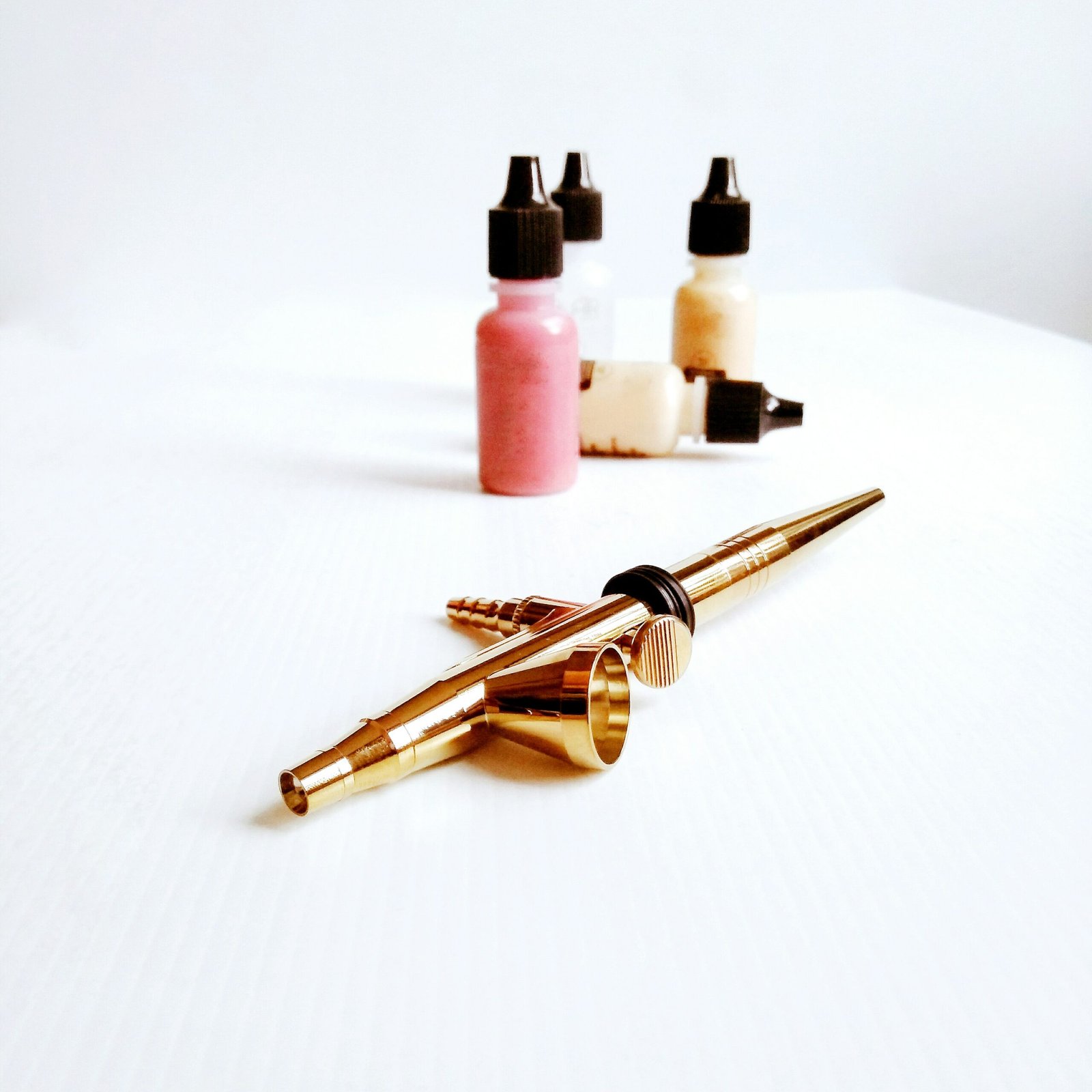Understanding Skin Tones
Skin tone is a critical factor in selecting the right makeup products, as it influences how colors appear on the face. Skin tones can be categorized into three primary groups: warm, cool, and neutral. Warm tones exhibit golden, peachy, or yellow undertones, while cool tones present pink, red, or blue undertones. Neutral tones, on the other hand, strike a balance between the two, exhibiting characteristics of both warm and cool undertones.
Determining your skin tone can be achieved through several methods. The vein test is a widely used technique where one examines the color of the veins on the inner wrist. If the veins appear greenish, it typically suggests a warm tone, while bluish veins indicate a cool tone. Those with neutral tones will often see a mix of both colors. Another method is the white paper test, where holding a piece of white paper next to the face allows for an easier comparison. If the skin looks better against the white backdrop, warm tones may dominate; conversely, if the skin appears dull, it may suggest cool undertones.
The jewelry test is also significant in identifying yours for optimal makeup matching. Some individuals find that gold jewelry complements their skin better, which often points to warm undertones, whereas silver jewelry enhances cool tones. Recognizing these undertones is essential, as they guide the choice of foundation, blush, and lip colors that will harmonize beautifully with the skin.
Ultimately, understanding your skin tone and the associated undertones will allow for precise makeup product selection. This knowledge ensures that your makeup not only enhances your natural beauty but also works cohesively with your unique skin characteristics, providing a polished and refined appearance.
Choosing the Right Foundation and Concealer
Selecting the appropriate foundation and concealer is essential for achieving a flawless makeup look that enhances your natural complexion. The first step in this process is to assess your skin tone accurately. Skin tones generally fall into three categories: fair, medium, and deep. In addition, it’s crucial to recognize the undertones—cool, warm, or neutral—that can significantly influence your choices. Cool undertones typically have a pink or bluish hue, warm undertones lean towards golden or peachy shades, and neutral undertones tend to balance both.
When it comes to foundation formulations, there are several options available, including liquid, powder, and cream. Liquid foundations are versatile and offer varying coverage levels, suitable for most skin types. Powder foundations provide a matte finish that is ideal for oily skin, while cream foundations offer higher coverage and a dewy finish, perfect for dry skin. The selection of the formulation should align with your skin type and desired coverage for a more natural appearance.
Shade matching is vital for both foundation and concealer. An effective way to test the foundation is to apply a small amount on your jawline and blend it in. Choose the shade that seamlessly merges with your skin, as this ensures a more uniform complexion. When selecting concealer, it is essential to choose a shade that is one to two shades lighter than your foundation; this brightens the under-eye area and conceals imperfections without creating a stark contrast.
Blending techniques play an integral role in achieving a flawless finish. Utilizing tools like makeup sponges or brushes can help distribute the product evenly, ensuring seamless integration with your skin. Taking the time to build coverage gradually will prevent over-application, allowing your complexion to look effortlessly polished.
Selecting Blush, Eyeshadow, and Lip Color
Choosing the right blush, eyeshadow, and lip color is crucial for enhancing your natural beauty and ensuring a harmonious look that complements your skin tone. Understanding whether you have warm, cool, or neutral undertones can guide you in selecting products that flatter your complexion. For those with warm undertones, shades such as peach, coral, and warm pinks are excellent choices for blush. Eyeshadows in earthy tones like bronze, gold, and warm browns can elevate your look, while lip colors in coral, peachy nudes, or warm reds are ideal for a fresh finish.
Individuals with cool undertones should lean toward pinks, mauves, and berry shades for blush. Eyeshadows in cooler shades like lavender, silver, and taupe can beautifully enhance your eyes, while lip colors such as mauve, raspberry, or classic red will complete your makeup palette. For those with neutral undertones, you have the flexibility to mix and match. Blush in soft pinks, rose, or neutral apricots are all great options. When it comes to eyeshadow, shades like soft taupe, gray, or even plum can work wonders, while lip colors that range from rosy nudes to muted mauves will enhance your overall appearance.
In addition to selecting the right shades, layering techniques can further enhance your makeup. For instance, combining a blush with a hint of highlighter can add dimension to your cheeks. Similarly, experimenting with eyeshadow layering—using a lighter shade on the lid and a darker shade in the crease—can create depth. Keeping an eye on seasonal trends can also influence your choices: warmer tones may be more prominent during spring and summer, while cooler hues can be favored in the fall and winter months. This adaptability ensures your look remains fresh and relevant throughout the year.
Makeup Application Techniques for a Harmonious Look
Achieving a harmonious makeup look requires attention to both the products used and the techniques applied. When applying foundation, begin with a clean and moisturized face. Use a damp makeup sponge or a foundation brush for an even application. Start from the center of the face and blend outwards, ensuring that the foundation seamlessly merges with the natural skin tone. A common mistake here is applying too much product at once; instead, build up coverage gradually to avoid a cakey appearance.
Next, when it comes to blush, selecting the right shade for your skin tone is crucial. Generally, those with warmer undertones should opt for peach or warmth-infused shades, while cooler skin tones may benefit from pinks and berries. Apply blush using an angled brush, starting from the apples of your cheeks and blending diagonally towards the temples. This technique creates a lifted effect which enhances the overall harmony of the makeup.
Eyeshadow application deserves special attention, particularly concerning coordination with the rest of your look. It is advisable to begin with a primer to maximize color payoff and longevity. Choose a palette that complements your eye color and skin tone, and utilize a clean brush to apply a transition shade into the crease. Build depth gradually by adding darker shades, blending with back-and-forth motions to avoid harsh lines. Eyeliner should be applied with precision to enhance your eye shape without overpowering other elements.
Lastly, lip makeup can radically transform a look. Carefully select a lip color that pairs well with your blush and eyeshadow. Utilize a lip liner to define the shape and prevent feathering, and then fill in with lipstick. Applying with a brush can offer control in achieving a polished finish. Remember to set your makeup with a translucent powder or setting spray to ensure longevity. By avoiding the temptation to overapply each product, you can craft a balanced, coordinated appearance, showcasing your chosen colors harmoniously.



